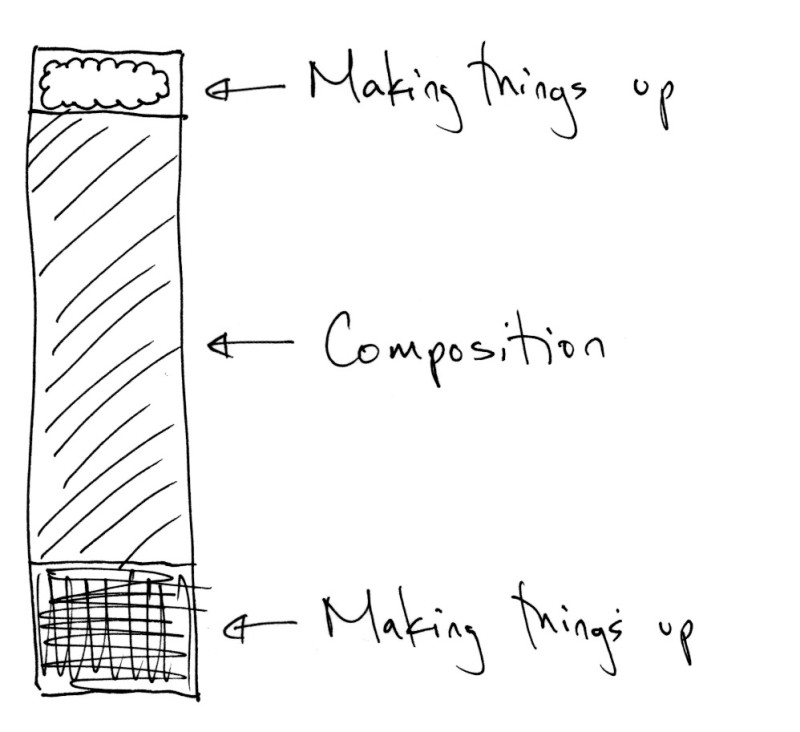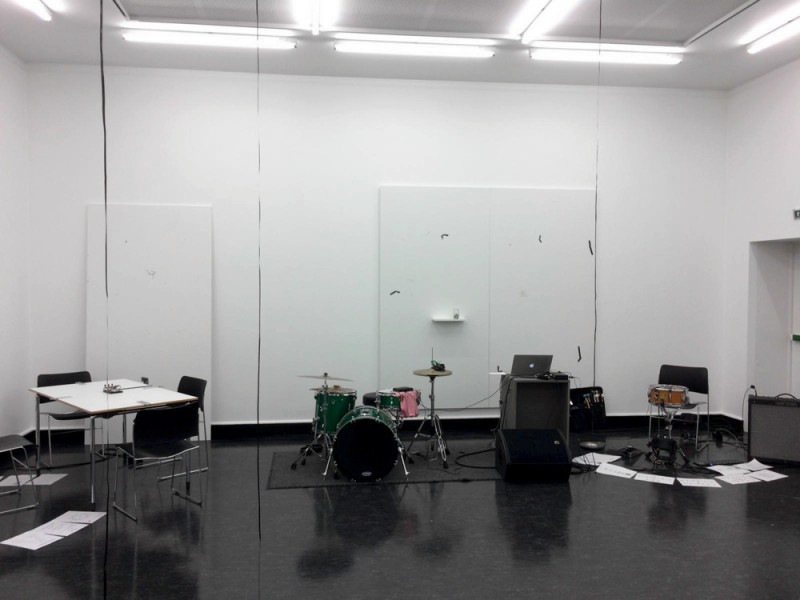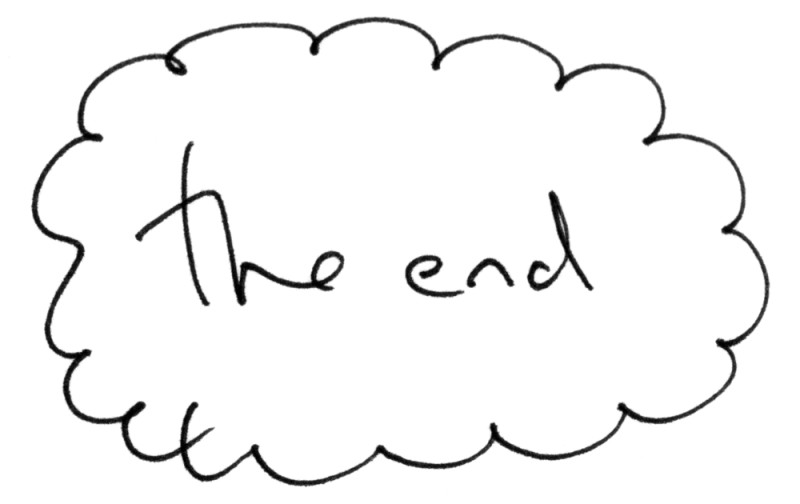Just Making Things Up
I was sitting in a cafe with a few friends and we ended up talking about how “just making it up” was often used as qualifier when talking about shitty music. Like seeing someone perform, it sucking, and thinking “it sounds like they’re just making it up”. I couldn’t completely disagree with this, as I have heard my fair share of shitty improv. But after seeing a close friend (Richard Craig) give a talk about performing with flute/feedback, and how adaptive/reactive he has to be, I couldn’t help but think that this was also a way to describe the sublime in performance. That shimmer/glimmer of transcendence. “Making things up” means it fucking sucks, or touching god. The stuff in the middle is composition.

Improvising is a big part of what I do, as a performer (whatever that means), composer (whatever that means), and just about everything else. And as such, I’ve thought a lot about improvisation, specifically things that I don’t like about it, in my performance as well as in others’. Many of these [shitty improv] tropes have inspired me to find ways to overcome them. Sometimes just being aware of the trope is enough to avoid it, but other times it’s taken a more deliberate reprogramming. What follows are a bunch of the tropes/ideas/problems and, where applicable, what I’ve done in order to overcome them.
///////////////////////////////////////////////////////////////////////////////////////////////////////////////////////////////////////////////////////////////////////
“Exposition Sucks”*
[su_pullquote align=”right” class=“”]The polite dance of “no, after you…” sucks the life out of the beginning of any improvisation.[/su_pullquote]
There’s something about a mushy improv beginning that really sets the tone for a boring performance. The polite dance of “no, after you…” sucks the (potential) life out of the beginning of any improvisation. I really enjoy hearing a improvisation with a strong/decisive start. This doesn’t necessarily mean loud or sudden, but an improvisation that “starts in the middle”, to borrow a line from Del Close.
Comedy/theatre improv, aided through narrative, has ways of dealing with this by explicitly skipping exposition. No scene begins with “Where am I?”, “Who are you?” type questions. A more appropriate opening line might instead be “Why did you steal money from my mother?”. That instantly sets up a relationship between the characters, there is tension, there is context. There is something to begin building a scene from. Although the innate narrative of language provides the mechanism here, it is not difficult to see the parallels in music.
In my own improvisation I try to be aware of this and take a narrative/contextual approach to beginnings. This may mean establishing a gesture/language/syntax from jump, or it might mean listening to other performers and building/developing what they open up with. If I do hear someone starting to flirt with “no, after you…” I will try to hijack that direction with a new opening. Anything to avoid mushy indecisive beginning.
“If you see an ending, take it!”**
On the other side of a shitty start to an improv is a shitty end. Endings can be elusive in improvisation, even among seasoned performers and especially among inexperienced improvisers. The ability to not only spot but execute an ending in improvisation is a valuable skill to have. When someone plays through an ending, the performance carries on but only in a zombie state. There are no new ideas, only the ending of a run-on sentence -on sentence -on sentence -on sentence.
Over the years I have developed an allergy to this inability to end. This tendency to plow through a possible ending shows little regard for flow and sensitivity to context, and demonstrates a lack of critical listening, which is the centerpiece of highly interactive improv. It can be very tempting to add one last note or gesture, but multiply that desire by the amount of performers you have, and it is easy to see how this can quickly get out of hand.
Developing the musical muscle that is taking an ending in improvisation led to the creation of a series of improv pieces written with Sam Andreae called Battle Pieces where we explore and develop skills/ideas like these further through competitive improv games. Endings, along with many of the other tropes described in this article, have found their way into a Battle Piece.
(don’t) Gotta catch ’em all
You know that feeling when you’re listening to someone read something and you can see the stack of papers they are reading from? Just sat there frozen, while you see the sands slowly dribble through the hourglass. Well, I get the same feeling when I start seeing a performer go through all of their toys.
Having a figurative or literal “bag of toys” is fantastic as an improviser. You have access to worlds of sounds and performance techniques that wouldn’t have otherwise. But it’s very easy to get sucked in to an accountant-like housekeeping when playing with objects and unusual performance techniques. Musicality gets left behind as a consideration and it becomes more about cataloging the objects/approaches, often in a subconscious way. Improvisations don’t need to be a survey of every possible sound or approach.
In addition to moving through all of the toys there is often a minimum/maximum amount of time associated with using a toy. I can hear this coming a mile away when I see a performer reach for an unusual implement or technique. I know that I’m going to be stuck listening to this for a while…with no possibility of a change until playtime is over. In a way, it makes sense. If you go through the mental and physical preparations required to use a toy, it makes sense to make the most out of it, particularly if it difficult to set up.
As someone who largely hits things with other things, this is of particular interest. Each stick/beater/actuator takes some housekeeping to set up, and moving between playing surfaces equally requires some physical/mental overhead. It takes a keen discipline to override this tendency and desire to “make the most out of it”, but I have found that listening with “real-time ears” instead of “performer ears” makes a huge difference here. Sometimes the most perfect use of a toy is when it is used only once.
Form(lessness) or Like so much background noise
The classic “slow build towards a crazy climax”, the “quiet and going nowhere”, and the cheezy “ABA ending tag” are my least favorite forms to listen to in an improvised performance. Each one of them oozes boredom and predictability. Granted, it is difficult to think about form while improvising, but thinking (creatively!) on multiple timescales at once is something that can be developed through practice.
Several years ago, I started working on a series of improvised pieces that dealt with form and memory as their primary compositional material (the .com pieces) as well as a framework for thinking about and analyzing improvisation (Making Decisions in Time). Through working on these pieces and subsequent analyses I found that I was not only able to be aware of larger scales of time during an improvisation, but to be able to thinking creatively while doing so. It felt like taking a step back, perceptually, and being able to simply take more in. A wider improvisational aperture. The pieces and framework, in that sense, were like improvisational/perceptual etudes.
In addition to form, memory plays a funny role in improvisation, given its real-time nature. Unlike a notated composition where it is possible to look at a (relatively objective) score, and point out how something is similar, yet still different (such as Feldman‘s pieces that deal with perception/memory/confusion (e.g. Triadic Memories), what seems to be the same IS the same, in an improvised context. We do not have the luxury of “out of time” perception in an “in (real-)time” performance. The combination of using form and memory in this way, while improvising, gives you more options to the “classic three” improvised forms mentioned above.
All together (or not)
I find that when you get more than two people improvising together at the same time, you can easily run into a position where nothing ever “comes together”. It is unlikely that multiple performers will shift to a different kind of material suddenly, or have any kind of unison change. Towards this end I developed a system for dynamic networked scores for improvisers called dfscore. dfscore allows for the generation and synchronization of different kinds of musical prompts (text, images, notation, videos, etc…) across a network to be displayed on computers/phones/screens. I have found that working with this kind of system has allowed me to incorporate synchronicity into improvisation in a way that still keeps things open and fluid.
On the other side of the same coin is coincident fetishism, where things that are probabilistically unlikely to happen are overemphasized musically. This leads to having moments of unintentional or unexpected rhythmic, melodic, or harmonic synchrony treated like musical gold. Events that should be fleeting are repeated, ornamented, and exaggerated, generally to the disservice of the music.
One of the most interesting aspects of improvisation is stumbling across the unexpected, but there is a difference between having something exciting and interesting unexpectedly happening and pursuing that, and having something banal (though still unlikely) happen. It’s all about context. If the only reason the moment is *interesting* is because it was unlikely to happen, then let it move on, unnoticed/uncommented. If, however, it is genuinely interesting, then explore/develop/expand in a contextually/aesthetically appropriate manner.
Painting the walls
Through working heavily with form/memory in my improvisation I noticed a tendency to want to “paint the walls” with contrast between formal sections. Going in to an improvisation knowing that I would have a several formal sections, I would initially tend to make the distinction between sections extreme in an attempt to differentiate the materials as much as possible. Although potentially opening up potential avenues for development, extremes of material tend to be predictive and lacking in nuance. If a section is quiet, an obvious contrast would be to follow it with a loud section. Similar binary relationships can be established with other parameters, but these relationships are largely superficial. They are simply the contrast between the most readily identifiable aspect of the music at that point.
This “painting of the walls” reduces material to caricatures, as the binary relationships that are setup are not necessarily well grounded in the material. This is compounded through multiple shifts in material which can leave you stuck in a loop of superficial material change (e.g. quiet->loud->quiet again!). This superficial approach to material shifts explores only the walls of a room, but never the space in between. The 2 dimensional area instead of the 3 dimensional volume of an improvisational space.

The solution I have explored is centered around less perceptually-bound jumps in material. Creating contrasts in language/syntax, gesture/shape, density/space, or aesthetics (the clothes form wears when it has to go outside!) can offer more complex shifts in formal blocks of material, while still retaining the conceptual hooks required to navigate the formal space. Almost setting up contrasts in metaphors, which then carry non-binary perceptual shifts with them.
///////////////////////////////////////////////////////////////////////////////////////////////////////////////////////////////////////////////////////////////////////
That concludes the list of some of the more interesting and unusual improv tropes I have come across, along with the approaches and systems I have developed to overcome them. Each on their own doesn’t amount to much, but when combined, they have added a clarity and lucidity to my improvisation. Each overcome trope a spin on the improvisational prayer wheel, a step closer to transcendence.



